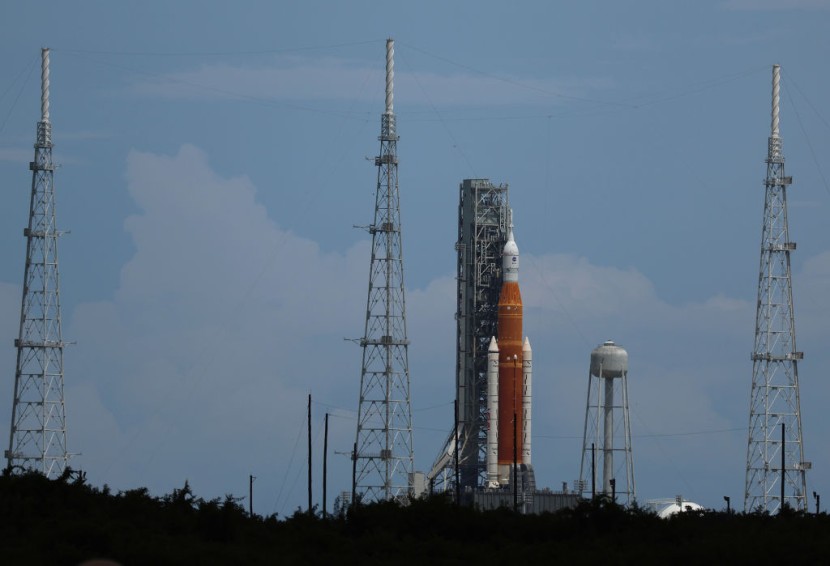
NASA's new moon rocket was set to launch on Monday in a crucial test flight when a series of lightning strikes at the launch pad, causing concerns over the mission's viability in the near future.
However, authorities said the rocket remained on track to blast off on schedule, saying that the lightning strikes did not cause any major damage. The 322-foot Space Launch System rocket is the most powerful ever built by the space agency.
NASA's Moon Rocket Test Launch
The moon rocket is posed to send an empty crew capsule into lunar orbit, a half-century after NASA's Apollo program, which landed 12 astronauts on the moon. Astronauts could return to the moon in just a few short years if the six-week test flight goes well.
However, NASA cautions that the risks of the launch are high and that the flight could be cut short if they find any major problems. In lieu of astronauts, NASA strapped three test dummies into the Orion capsule to measure vibration, acceleration, and radiation inside the rocket. The latter is one of the biggest hazards to humans in deep space, as per NBC News.
On Sunday, officials said that neither the rocket nor capsule suffered any damage during the thunderstorm on Saturday, adding that ground equipment was also unaffected. Authorities confirmed five lightning strikes that hit the 600-foot towers surrounding the rocket at NASA's Kennedy Space Center.
However, the space agency said more storms were expected to come, although forecasters gave 80% odds of acceptable weather on Monday morning. They expected the weather to deteriorate during the two-hour launch window.
According to the Associated Press, on the technical side, NASA's senior test director, Jeff Spaulding, said the team did its best over the past several months to eliminate any lingering fuel leaks.
Massive Scientific Undertaking
A pair of countdown tests earlier this year prompted repairs to leaking valves and other faulty equipment, but engineers would not know if all the fixes were good until just a few hours before the planned liftoff.
If the Monday test launch does not pan out, the next launch attempt will be scheduled on Friday. The launch team was thrilled after so many years of delays and setbacks to finally be so close to the inaugural flight of the Artemis moon-exploration program, named after Apollo's twin sister in Greek mythology.
Spaulding said they were now within 24 hours of launch, which he called amazing for where they have been on this journey. The follow-on Artemis flight, as early as 2024, would see four astronauts flying around the moon.
A landing on the lunar surface could follow in 2025, and NASA is targeting the moon's unexplored south pole, where permanently shadowed craters are believed to hold ice that future crews could use.
In 2012, officials estimated that the SLS rocket would cost $6 billion to develop, debut in 2017, and carry a $500 million per launch price tag. However, the rocket is only now debuting and has cost more than $20 billion to develop, with its per launch price tag now estimated to be at $4.1 billion, CNBC reported.
Related Article: NASA's James Webb Telescope Discovers First Evidence of Carbon Dioxide in Atmosphere of Exoplanet
Related Article:
NASA's James Webb Telescope Discovers First Evidence of Carbon Dioxide in Atmosphere of Exoplanet
© 2025 HNGN, All rights reserved. Do not reproduce without permission.








